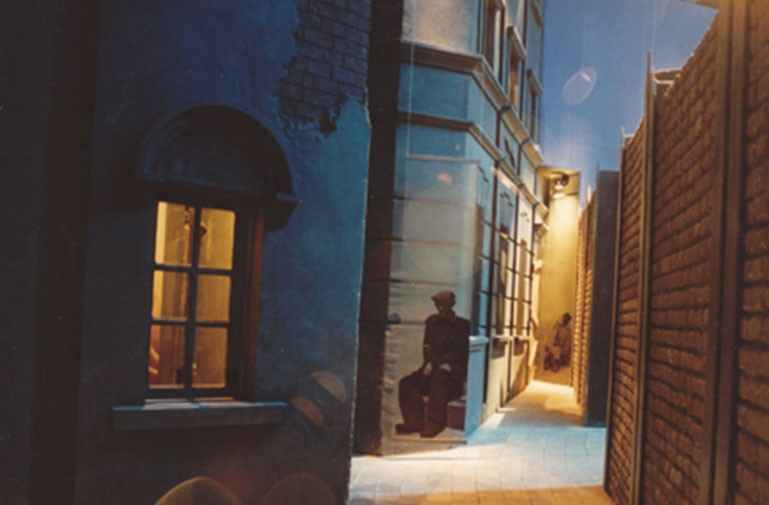The Jewish Child During The Holocaust
Based on actual stories taken from diaries and testimonies
The exhibit is based on actual stories taken from diaries and testimonies. The stories are heard at audio listening stations along the exhibit’s route, with children’s voices narrating first person the life story of children who lived at that time. At other stations, the voice is replaced by audiovisual presentations of the personal testimonies of adult survivors who were children at the time of the Holocaust.
The exhibit’s three-dimensional walk-through sets are arranged chronologically, from before the outbreak of the Second World War until its end. The displays incorporate photographs and documentary film footage on large screens.
The narrative excerpts and the displays are set along the fine line between reality and symbolism, leaving a wide scope in which the visitor’s imagination can range to create additional stories.
The building has three levels: the Memorial Hall, the route of the exhibit, and the Hall of the Eternal Flame. The Memorial Hall serves as an introduction and entrance to the exhibit, “The Jewish Child During the Holocaust”. Set in its walls are stained glass windows whose designs are based on the drawings of children in the Theresienstadt (Terezin) ghetto.
The stained glass windows with their vivid colors faithfully represent the personal testimonies of the ghetto’s children, depicting their childhoods rich in experiences despite the hardships of hunger and separation from parents and friends, and despite the fact that many of the children were later transported to Birkenau.
The voices of children can be heard in the background, reading from the diaries and testimonies of boys and girls who lived at that time.
The continuation of the Memorial Hall leads to the exhibit route, that descends as it circles twice around the conical central structure. The surface of the inner cone, engraved with the first names of children, is awash with soft natural illumination from the hidden skylight above, with the inner edge of the exhibit route open to it. This light creates an unbroken connection between the route and the reality outside.
The spiraling structure of its route prevents the visitor from taking the entire exhibit in at a glance. Each time only the immediate section ahead is revealed. Walking along the route thus constructs an experiential display that stimulates a continuing interest, and echoes the developments of living in those times.
Situated at the center of its middle level is the permanent exhibit, “Janusz Korczak of the Children,” an independent unit within the museum exhibit.
The route concludes at the lowermost level of the structure, in a space whose shape is a circular amphitheater. At the center of its floor burns “The Eternal Flame.” The fire continually rises as if from the depths of the earth, serving as a remembrance of an unprecedented period in human history when humanity experienced a descent to the pit of darkness.
Visitors follow the route through the exhibit without a guide; this private, intimate encounter at one’s own pace allows a personalized experience. At the end of the visit, children may participate in the creative activities workshops in the visual arts, drama, music, creative writing, and multimedia. These activities are designed to enable the child to deal with the experience of the visit and to work with it using accessible means, thus easing the transition from the museum to the return to the outside world.





